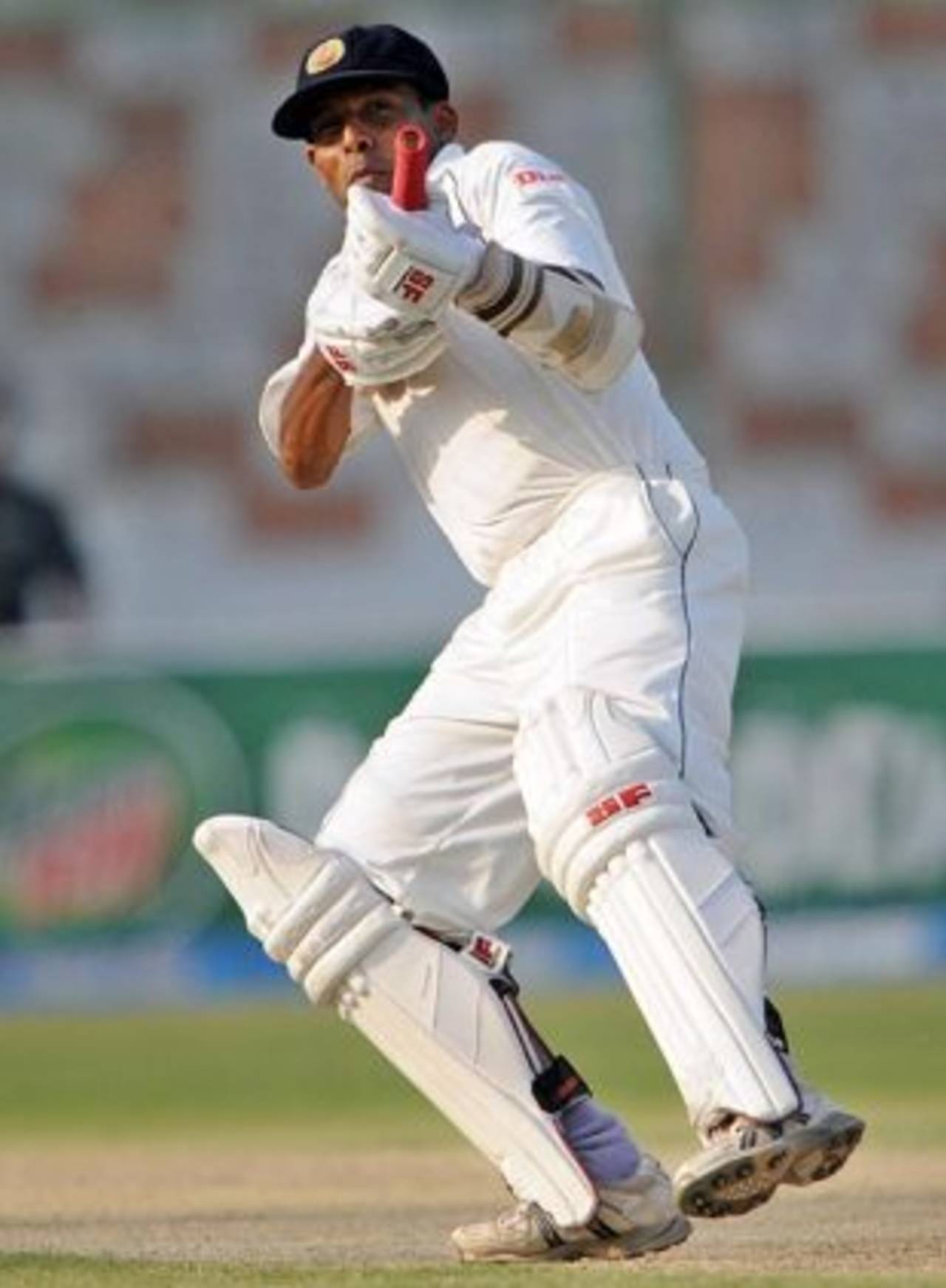One of the most startling tales in Sri Lankan cricket is that of
Thilan Samaraweera's machine-gun celebration.
In Lahore four years ago, he nestled his bat under his armpit and shot pretend rounds out of the handle for the first time in international cricket. As fate would have it, Samaraweera
had a bullet travel 12 inches into his thigh the morning after the double-hundred that sparked that celebration.
It is an odd thing to be remembered for. Thirty years from now, perhaps his ordeal will come up as a piece of cricketing trivia, and some long-toothed tragic will know the name of that fellow who was shot in the middle of a Test match. But Samaraweera deserves better than a grim footnote. That story is moving and his comeback compelling, but for much of his career, defiance drove him at the crease, and for that, Sri Lanka's more beloved batsmen have owed him much.
In his later years as an international cricketer, before the Australia tour that heralded his departure, Samaraweera's ability to lift Sri Lanka out of a pit of the top order's making was an emphatic endorsement for substance over style. Tillakaratne Dilshan might have manned the cannons, while Mahela Jayawardene and Kumar Sangakkara commanded pretty cover drives, but Samaraweera often went to work when walls were caving in, and most times, he dug his side through to the light, if not always to victory.
As late as 2008, he was marked by some as a backyard bully, but Samaraweera spent the next few years proving that criticism misguided. Since 2008, his away record has been
vastly superior to his team-mates', and among the best in Asia. He began his domestic career primarily as an offspinner, and has 357 first-class wickets at 23.43, but he finished in internationals with the most robust technique against the moving ball of any present Sri Lanka batsman, and a better head for pace and bounce than many more talented men from the subcontinent.
His most memorable, and perhaps finest stretch, was the year-end tour to South Africa in 2011, where he was Sri Lanka's best batsman in every Test. Against the fast men, Samaraweera piled on better numbers than any Asian had in South Africa since 2001, while his team stumbled to an innings defeat and a ten-wicket loss around him. Typically, he had produced his best work against the most hostile attack he has ever faced, in their own conditions, after he had been dropped for the previous series. Without his 102 in the first innings
in Durban, Sri Lanka would likely still be awaiting their first win in South Africa.
It is a shame that his last act as a Test batsman was the sickening swipe across the line
in Sydney, when the team was in the sort of mire for which his cricket seemed created. In many ways it suited a man like Sanath Jayasuriya to cut his last ball in international cricket in the air to point, but Samaraweera's demise did not fit him at all. On that tour, he had let the psychological beatings from previous innings dent his steel, where usually his strength only bloomed in adversity.
Perhaps he will reckon it is better to go out this way, than have allowed a bullet to end his career, as it so nearly did. To have forged and re-forged his technique after being unfairly dropped from the top level, and hopes of a recall seemed slim, he must count a sunny disposition among his virtues.
After Lahore, Samaraweera did not can the
machine-gun century celebration, or think it an ill omen. Though his batting was dour at times, he was too good humoured for such superstition, at the crease, at practice and with the media. With little on the horizon for him in the next year, and with so many young batsmen beating at the selectors' door, he has chosen the right time not to launch another comeback.
